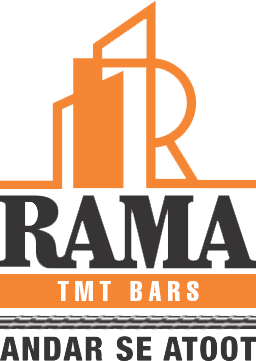In the construction and infrastructure sectors, the quality and performance of building materials are critical to the safety, longevity, and stability of structures. Thermo mechanically treated (TMT) bars are renowned for their superior mechanical properties, which make them essential in reinforcement for concrete structures. Among various alloying elements used in TMT bars, nickel stands out due to its significant impact on the final product’s performance. This article delves into the pivotal role of nickel in TMT bar manufacturing, exploring its benefits, mechanisms, and impact on the industry.
TMT bars are a type of reinforcement steel bar used to strengthen concrete structures. The manufacturing process involves subjecting the steel bars to high temperatures and then rapidly cooling them. This process enhances the steel’s mechanical properties, including tensile strength, ductility, and resistance to environmental factors. TMT bars are widely used in various construction projects, from residential buildings to large infrastructure works, due to their high strength-to-weight ratio and reliability.

The Role of Nickel in TMT Bars
Nickel is a critical alloying element in the production of high-quality TMT bars. Its presence influences several key properties of the bars, which are essential for their performance in construction applications.
1. Enhanced Corrosion Resistance
Mechanism of Corrosion Resistance: Nickel significantly improves the corrosion resistance of TMT bars by forming a protective passive layer on the surface of the steel. This layer, primarily composed of nickel oxide, shields the steel from aggressive environmental factors such as moisture, chemicals, and salts.
Impact on Longevity: The enhanced corrosion resistance provided by nickel prolongs the lifespan of TMT bars. In regions with high humidity, saltwater exposure, or industrial environments, the addition of nickel helps prevent rust and deterioration. This not only ensures the structural integrity of buildings but also reduces maintenance costs and extends the service life of the reinforced structures.
2. Improved Strength and Durability
Strength Enhancement: Nickel contributes to the strengthening of TMT bars by improving their mechanical properties. It promotes the formation of a fine-grained microstructure within the steel, which enhances its tensile strength and hardness.
Durability Under Load: Nickel alloy exhibits higher resistance to deformation under heavy loads and stresses. This characteristic is crucial for applications in high-rise buildings, bridges, and industrial structures, where structural components must endure significant forces. The improved strength and durability of nickel-enhanced TMT bars or saria ensure that they can support substantial loads without compromising safety.
3. Better Ductility
Ductility Improvement: Ductility refers to a material’s ability to deform plastically before fracturing. Nickel enhances the ductility of TMT bars by refining the steel’s microstructure, leading to better flexibility and reduced brittleness.
Importance in Seismic Regions: In earthquake-prone areas, structures must absorb and dissipate seismic energy to prevent catastrophic failure. Nickel-enriched TMT bars exhibit superior ductility, allowing them to withstand dynamic loads and vibrations effectively. This property ensures that buildings can flex and absorb shock, providing increased safety during seismic events.
4. Resistance to High Temperatures
Thermal Stability: TMT bars are often subjected to high temperatures during various construction processes, such as welding or casting. Nickel enhances the thermal stability of the bars by preventing the degradation of their mechanical properties at elevated temperatures.
Performance in Extreme Conditions: Nickel-alloyed TMT bars maintain their strength and structural integrity even when exposed to high heat. This quality is particularly important in applications where the bars may experience extreme temperature variations, such as in industrial settings or in regions with harsh climatic conditions.
5. Quality and Consistency
Uniform Microstructure: The addition of nickel helps in achieving a consistent microstructure throughout the length of the TMT bars. Nickel influences the steel’s grain size and distribution, leading to uniform mechanical properties and performance.
Meeting Industry Standards: Consistent quality is crucial for ensuring that TMT bars meet industry standards and specifications. Nickel’s role in controlling the microstructure contributes to the reliability and predictability of the bars, ensuring they perform as expected in various construction applications.
Nickel plays an indispensable role in the TMT bar manufacturing industry by enhancing the bars’ corrosion resistance, strength, ductility, thermal stability, and overall quality. Its contribution to the mechanical properties of TMT bars makes them highly suitable for demanding construction applications, ensuring the safety and durability of structures. For manufacturers, incorporating nickel into TMT bars is a strategic investment that leads to superior products and long-term benefits for the construction industry.
Understanding the importance of nickel and its impact on TMT bar performance helps manufacturers deliver high-quality reinforcement solutions. By leveraging the advantages of nickel, manufacturers can produce TMT bars that not only meet but exceed industry standards, contributing to the creation of resilient and reliable infrastructure.
